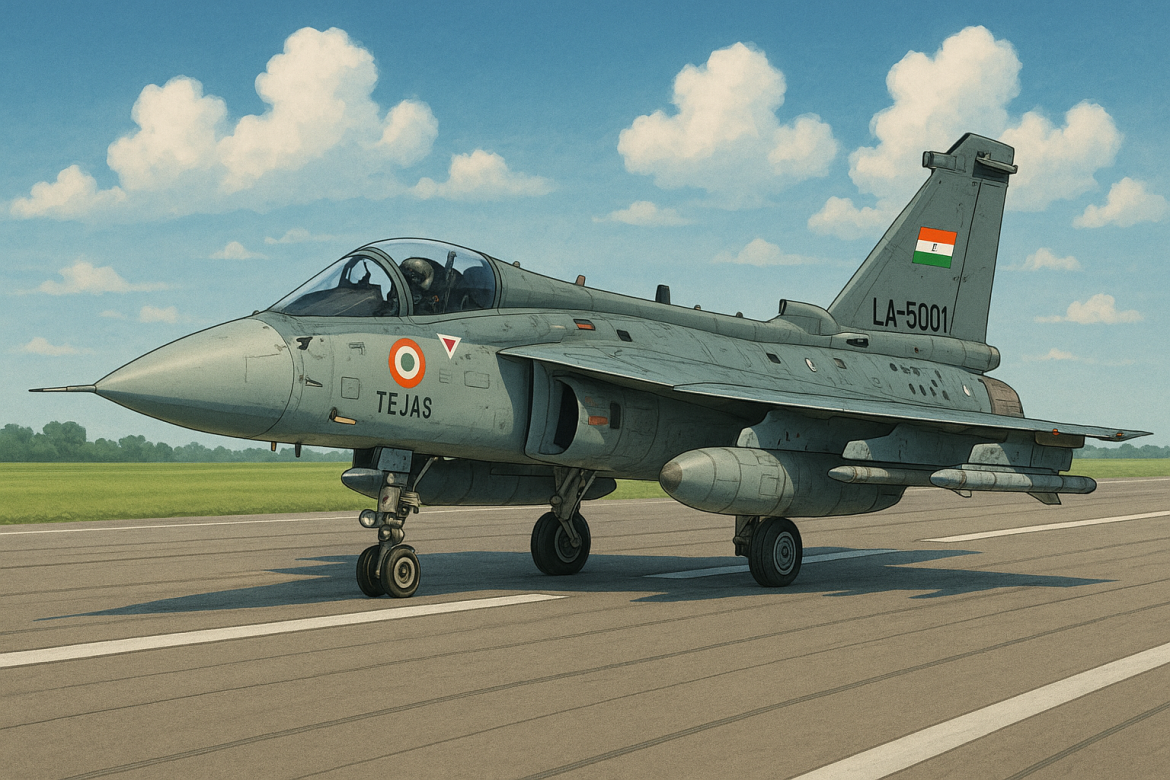The crash of an Indian-made Tejas fighter jet during a display at the Dubai Air Show has deepened scrutiny of HAL at a time when India is accelerating its indigenous defence manufacturing plans.
The aircraft went down on Friday afternoon, sending thick black smoke over Al Maktoum International Airport, and the pilot lost his life.
The incident unfolded during one of the world’s most watched aviation events, just as HAL is working through a heavy order pipeline for domestic platforms.
The air show paused activity while emergency teams responded at the site.
HAL stock comes under pressure after recent volatility
HAL shares have already been volatile in recent weeks and the Tejas crash has heightened pressure.
The stock is currently trading around ₹4,593 on the National Stock Exchange.
Source: Google Finance
The price fell sharply after its latest quarterly results, when rising revenue was offset by tightening margins.
Investor sentiment had previously been supported by strong defence orders, including a major contract for new Tejas Mk-1A jets.
With the Dubai incident now raising concerns about reliability and performance, analysts expect near-term caution as the market tracks the inquiry and any impact on HAL’s production or certification timelines.
Tejas crashes during a public flying demonstration
The Tejas took off for its display at 12:15 pm local time. The jet lost altitude at around 2:10 pm while performing an aerobatic routine and went down near the airport.
Videos circulated online showed the aircraft descending rapidly without stabilising. A large plume of black smoke rose from the crash site, and spectators at the viewing enclosures moved away as emergency sirens sounded across the venue.
The crash disrupted flying displays at the biennial event, which has hosted major aircraft orders from global airlines throughout the week.
India’s defence manufacturing drive in the spotlight
The Tejas programme forms a central part of India’s goal to expand its own defence production.
HAL also manufactures the Prachand light combat helicopter, the Light Utility Helicopter, the HTT-40 basic trainer, and several upgraded variants of the Su-30 produced under licence.
The company is working on indigenous engines such as the HTSE-1200 turboshaft and has begun indigenising advanced aviation systems, including obstacle avoidance and degraded visual environment technology through new industry partnerships.
These programmes underpin India’s long-term strategy to reduce reliance on imports and strengthen domestic aerospace capability.
Pressure mounts as HAL expands its portfolio
HAL recently reported growth in profit and revenue for the quarter ending September, although margins contracted, adding financial pressure as the company scales up production.
With new aircraft orders now tied closely to India’s defence planning, reliability remains crucial for HAL’s reputation.
The Tejas crash introduces operational and commercial challenges at a time when the company is preparing for expanded deliveries.
The findings of the inquiry will be watched closely to see whether they affect manufacturing schedules, upgrade plans, or future deployments.
The post Tejas crash in Dubai raises tough questions for HAL and India’s defence push appeared first on Invezz

